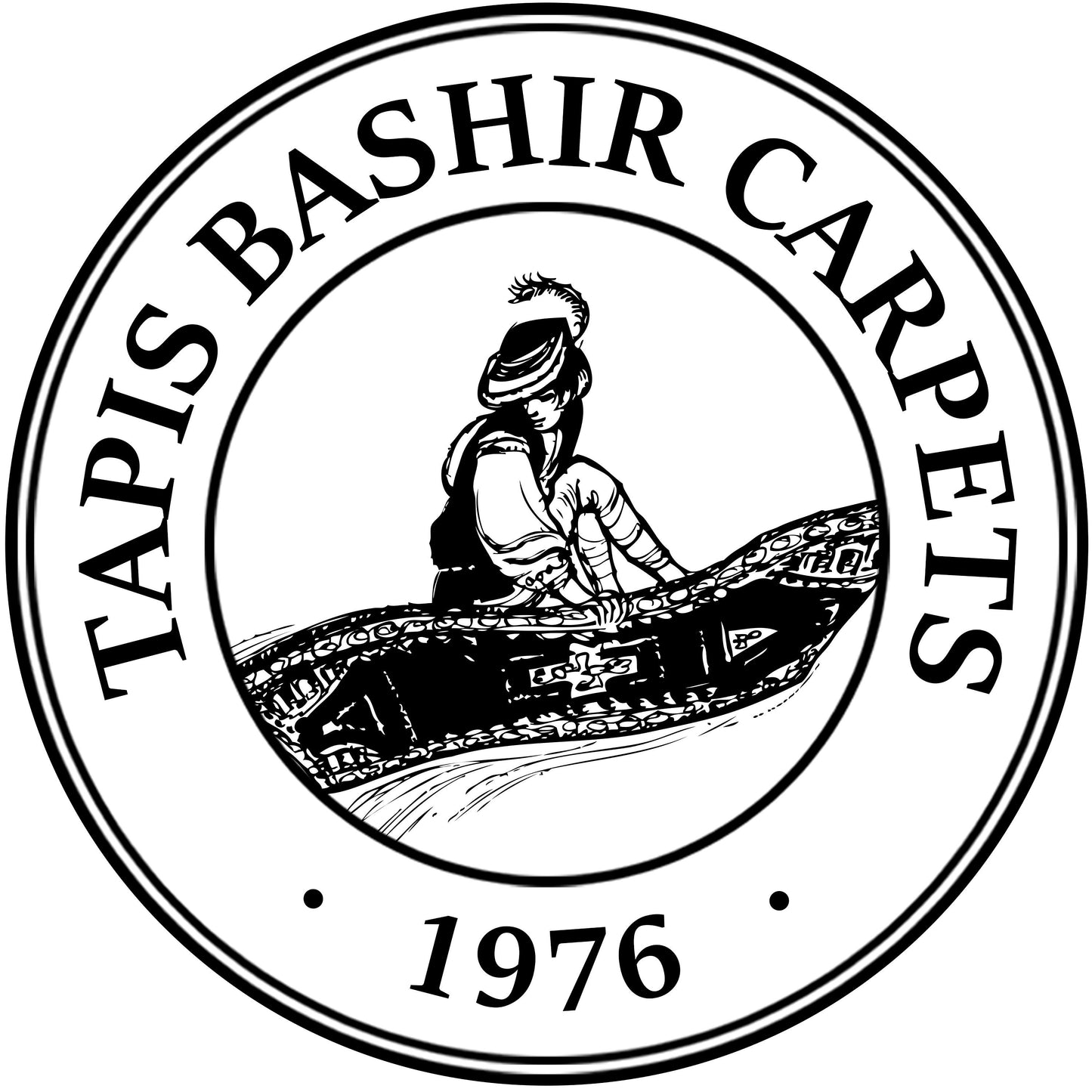Tauris - Gardens of Paradise Carpet 11'11" x 9'
Overview
The finishing of this carpet was done using centuries old traditional techniques. Once its laborious hand-knotting was completed, it was rolled and entirely submerged in a sanitizing bath where its fibers fully absorbed all cleaning liquid. After which it was laid flat on the ground where a team of cleaners used wooden oar-like paddles to push the water through its fibers and draw out impurities. Oar strokes were done in sync to prevent the carpet from getting torn. Each stroke tightened the knots even further. No machines were involved in its washing or drying.
Materials & Craftsmanship:
This diligently hand-knotted area rug is made of 100% pure lamb’s wool. Wool is a natural material, representing a healthy choice that is environmentally friendly with a long list of benefits. The pile of this wool rug is hygienic and non-allergenic, as the natural pile also deters the growth of bacteria and dust mites. It represents a great choice for asthma sufferers due to its natural filtering ability. The rug feels soft under the foot while remaining wear-resistant and long-lasting. With proper maintenance tailored to its needs, this rug can last over 75 years.
Homeowners benefit from an extra grip which is important for balance, good posture, and accident prevention. Moreover, wool rugs are flame resistant. Cleaning is also easier due to a protective layer that pushes dirt up and resists staining. In fact, it will trap dirt and dust until it is vacuumed. A wool rug is also a great option for adding the look and feel of luxury to any space, as wool is a luxurious material.
A Brief History of the Birds of Paradise Design
 There was a time when the design of an Oriental rug told, with some degree of certainty, the country and city, or the village or district where the rugs were woven. That is only partially true today. Persian, Oriental and Indo cultures love gardens. It is their Paradise. Many Persian, Oriental and Indian rugs showcase gardens. They depict many types of flowers and trees even hedged in with borders. Some may represent orchards and fields of flowers. Birds and animals are often found in their carpets. Many flowers can be recognized such as the tulip, the rose, the narcissus, the flower of henna, pinks and many others.
There was a time when the design of an Oriental rug told, with some degree of certainty, the country and city, or the village or district where the rugs were woven. That is only partially true today. Persian, Oriental and Indo cultures love gardens. It is their Paradise. Many Persian, Oriental and Indian rugs showcase gardens. They depict many types of flowers and trees even hedged in with borders. Some may represent orchards and fields of flowers. Birds and animals are often found in their carpets. Many flowers can be recognized such as the tulip, the rose, the narcissus, the flower of henna, pinks and many others.
The rosette, which is used so much in the borders of Persian rugs, is believed by some to represent the "Star of Bethlehem" or Persian flower. Birds are symbolic of the miracle of flight and the potential for freedom from our human boundaries, indicating the possibility to see from a greater perspective. They also symbolize man's innate striving for freedom of consciousness and the boundless joy of the heart.
Sources and inspiration: Bérinstain, Valérie, et al. L'art du tapis dans le monde (The art of carpets in the world). Paris: Mengès, 1996. Print.; Jerrehian Jr., Aram K.A. Oriental Rug Primer. Philadelphia: Running Press, 1980. Print.; Herbert, Janice Summers. Oriental Rugs, New York: Macmillan, 1982. Print.; Hackmack, Adolf. Chinese Carpets and Rugs, Rutland and Tokyo: Tuttle, 1980. Print. ; De Moubray, Amicia, and David Black. Carpets for the home, London: Laurence King Publishing, 1999. Print.; Jacobsen, Charles. Oriental Rugs A Complete Guide, Rutland and Tokyo: Tuttle, 1962. Print.; Bashir, S. (n.d.). Personal interview.; Web site sources and dates of consultation vary (to be confirmed). Without prejudice to official usage.
- Choosing a selection results in a full page refresh.
- Opens in a new window.



 Runner Rugs
Runner Rugs 2x3 Area Rugs
2x3 Area Rugs 3x5 Area Rugs
3x5 Area Rugs 4x6 Area Rugs
4x6 Area Rugs 5x7 Area Rugs
5x7 Area Rugs 6x9 Area Rugs
6x9 Area Rugs 8x10 Area Rugs
8x10 Area Rugs 9x12 Area Rugs
9x12 Area Rugs 10x14 Area Rugs
10x14 Area Rugs Round Rugs
Round Rugs Bath Mats
Bath Mats Doormats
Doormats 12x15 Area Rugs
12x15 Area Rugs




















